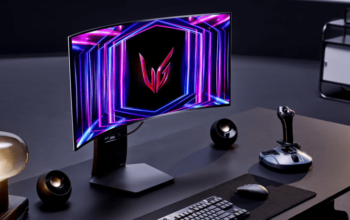AMD has recently announced their new Ryzen 5000 series processors and their new Radeon RX 6000 series graphics processors. However, with the components being slightly more expensive and possibly limited during the launch window, we looked to the previous generation to see if it was still viable to build a gaming setup which was a little bit “outdated”.
AMD’s Zen architecture has proven over and over again that they are capable of outdoing their competition in benchmarks. Benchmarks aside, we wanted to do some tests, regular people, like us, would look at to determine whether the setup is worth the investment. We looked at simple things like how the build performed in some of the more popular games and also some of the more recent ones. We also looked at everyday workflow items like video editing and even processing complex excel spreadsheets.
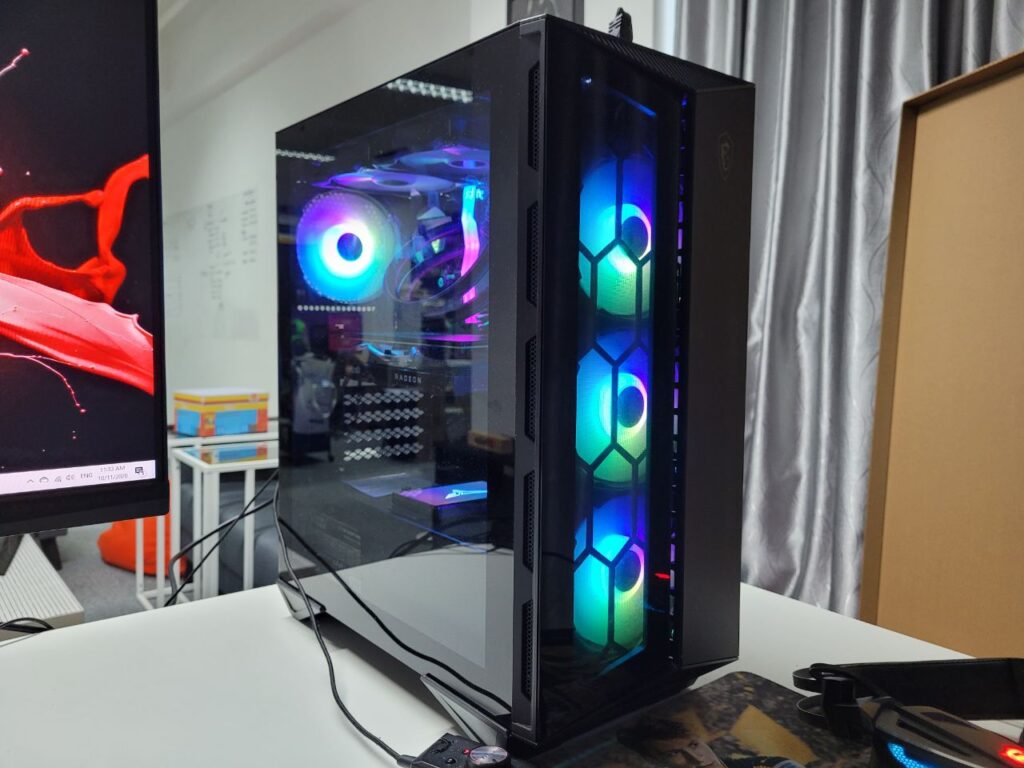
The only thing that remains is to answer the question: Is it still worth investing in a Ryzen 3000 and Radeon 5000 series build. Our frank answer: You could do worse; But we’re not going to leave with such a vague answer. We’ve broken down our experience with the rig with all the details we thought you’d need to make the decision.
The Build
| Processor | AMD Ryzen 5 (3600X) |
| Graphics Processor | MSI Mech Radeon RX5600XT |
| RAM | T-Force Delta 8GB 3200MHz x2 |
| Memory | T-Force Delta 2.5-inch SSD 256GB |
| Motherboard | MSI MPG B550i Gaming Edge with WiFi |
| Processor Cooling | MSI MAG Core Liquid 240R |
| Power Supply | Super Flower 650W Modular |
| Casing | MSI MPG Gungnir 110R |
| Accessories | MSI Immerse GH70 Gaming Headset MSI Vigor GK70 Gaming Keyboard Razer Basilisk Gaming Mouse |
When it came to this build, we tried to build a full MSI build while keeping the price as competitive as possible with one caveat – we had to keep to the latest parts available in the Malaysian market. That said, we had another thing on our minds when it came to the build: it needed to be able to do some video processing and play some of the latest games at the highest settings. Of course, we wanted to build a gaming PC, so the our main concern, aside from price, was its gaming performance.
We decided to go with the newer Ryzen 5 3600X for the processor cause the newer 3000 series processor is clocked slightly higher at 3.8 GHz which meant it has marginally better performance. That said, the sub MYR300 (USD$73.32) price difference between the Ryzen 5 3600 and Ryzen 5 3600X is what decided it for us. With that little bit more performance from the hexacore (6-core) processor, we could, in theory, get better performance from intensive programs which meant more gaming prowess. We also decided to invest in an AiO liquid cooling solution to squeeze even more performance from the CPU.
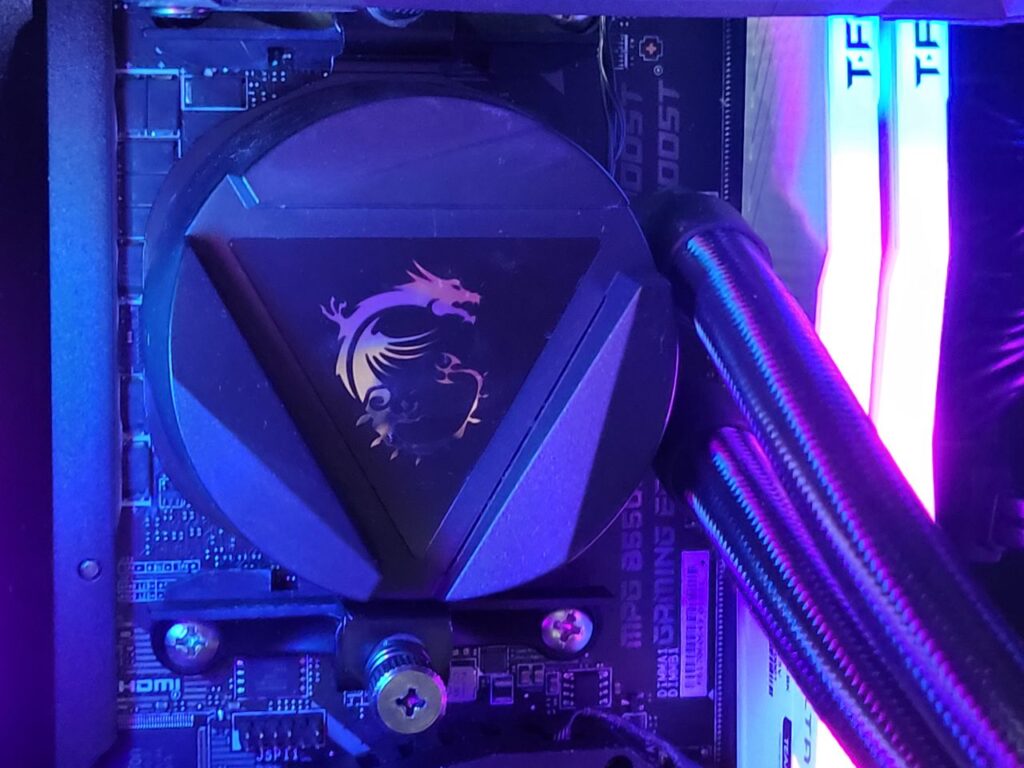
For the GPU, it was a hard decision between an NVIDIA RTX GPU and the RADEON. However, in the interest of being thrifty and also building a full-on AMD rig, we decided to go with the RADEON RX 5600XT which was a little more recent and didn’t have a gigantic price difference. That said, we were also taking into consideration the performance gains over the RX 5500XT and the significant price difference between the RX 5700 and the RX 5600XT.
The motherboard was a tough dilemma. We were tossed between a better full ATX motherboard and a mini-ITX. However, after much deliberation, MSI and AMD challenged us to use their mini-ITX board with built-in WiFi. Little did we know that the board would be on the higher end of the spectrum when it came to price. That said, if it was solely up to us, we would have gone with a more full-featured full ATX motherboard with more expandability.
The Cost Breakdown
| Item | Price (MYR) | |
|---|---|---|
| Processor | AMD Ryzen 5 (3600X) | 1,069.00 |
| Graphics Processor | MSI Mech Radeon RX5600XT | 1,459.00 |
| RAM | T-Force Delta 8GB 3200MHz x2 | 350.00 |
| Memory | T-Force Delta 2.5-inch SSD 256GB | 373.00 |
| Motherboard | MSI MPG B550i Gaming Edge with WiFi | 999.00 |
| Processor Cooling | MSI MAG Core Liquid 240R | 549.00 |
| Power Supply | Super Flower 650W Modular | 339.00 |
| Casing | MSI MPG Gungnir 110R | 449.00 |
| Accessories | MSI Immerse GH70 Gaming Headset MSI Vigor GK70 Gaming Keyboard Razer Basilisk Gaming Mouse MSI Optix MAG251RX | 547.00 580.00 279.00 1,899.00 |
With our key components decided on, we let pricing decide the rest of the build. Accessories and the monitor were provided courtesy of MSI and we had our Razer Basilisk lying around to complete the build.
Performance
With all the parts put together, we’re finally at the most important part – how did the build perform? To be very honest – it actually did really well. The build was powerful enough to handle pretty much everything we threw at it and running it overnight didn’t seem to affect our electricity bill by much. However, the biggest downside to the Radeon GPUs was the lack of proper ray tracing support which led to slightly less detailed graphics in games such as Horizon Zero Dawn and Monster Hunter.
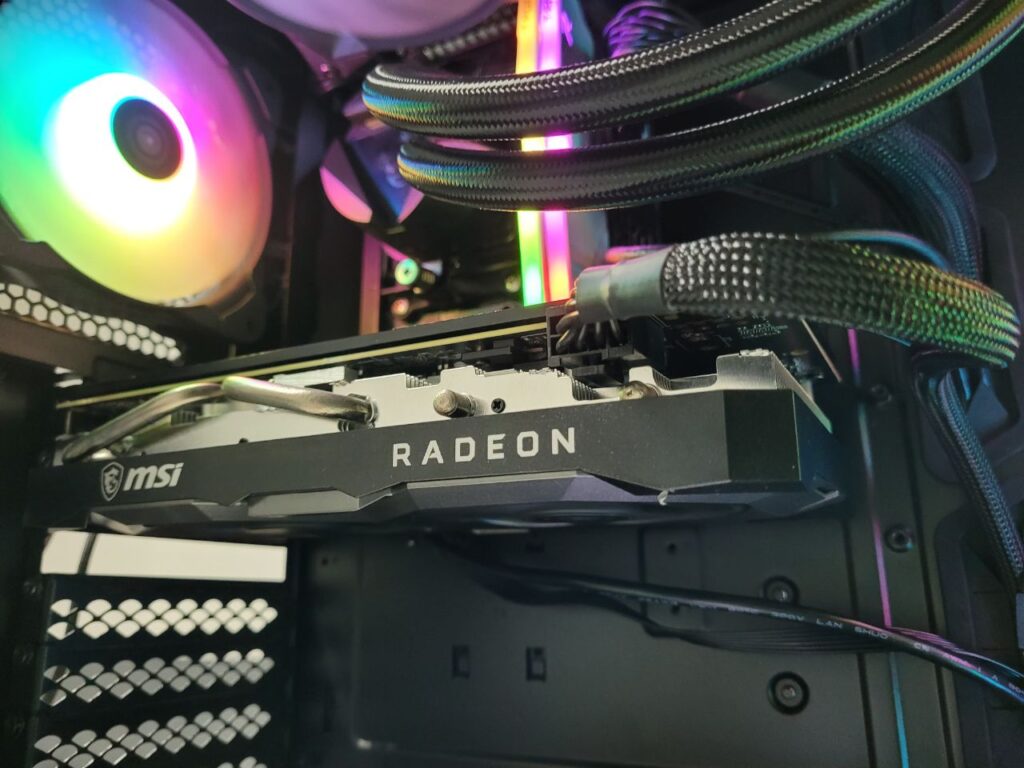
While the overview is pretty broad, we’re here for the itty-bitty details. We’re breaking down the build’s performance over three main categories – video and graphic work, gaming and high load processing. That said, we won’t be going into detail on 3D rendering work as it’s a niche area which we think doesn’t really reflect what a majority of us will be using the setup for gaming and day to day work.
AMD’s big play when it comes to their processors and graphics is a being made for gaming. We decided that since gaming and work are the mainstays of any computer system, we’d jump into the nitty-gritty when it came to gaming and some of the finer points of our work as well. During our review of the rig, we tested games such as Overwatch, Star Wars: Jedi Fallen Order, Monster Hunter Worlds and Horizon Zero Dawn. We also tested it with Adobe Premiere Pro and some large excel files.
Gaming
Gaming is essential when it comes to us gamers. So we took a gander at how the build performed on some of the more recent titles as a test. Overall, it didn’t do too bad when it came to graphics and it was pretty consistent across the board in hitting around 60fps during gaming – which is sufficient for most games.
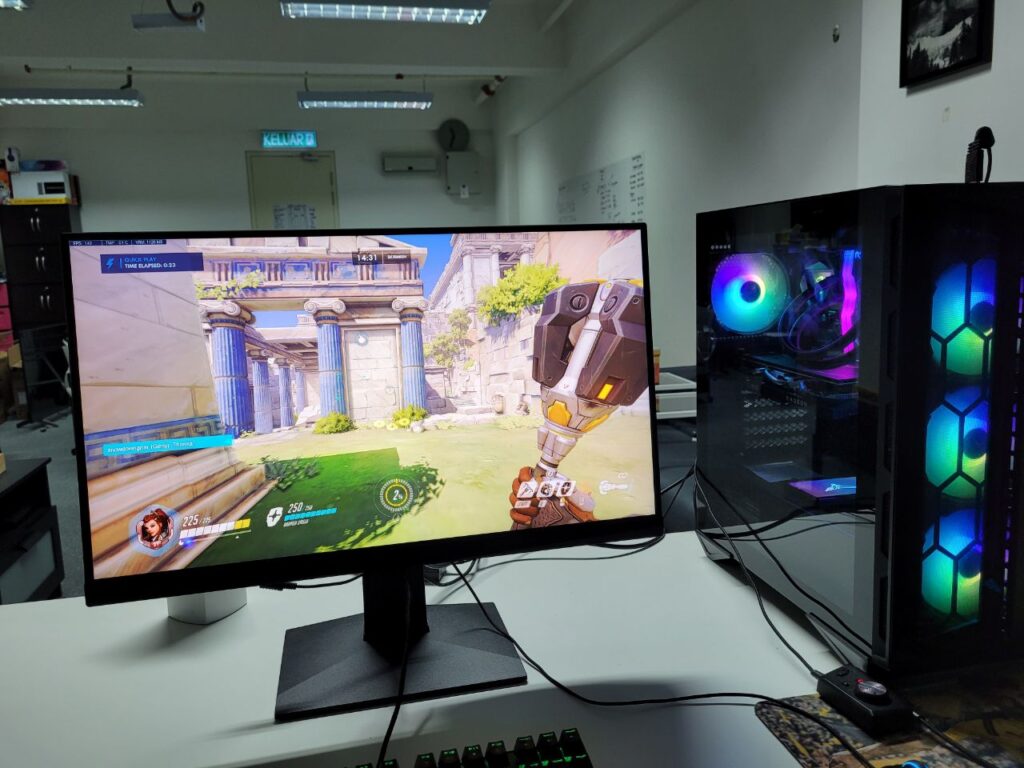
The first game we tested on the rig was Blizzard’s Overwatch – not the most graphically challenging game out there. But, when it comes to games like this, chaos can ensue when there’s a throwdown which can affect the game’s frame rate. That said, testing the game on a 55-inch 4K display was pretty amazing. There was little to no tearing or frame rate drops. However, the TV we tested it on didn’t have support for high refresh or frame rate so it maxed out at about 50 to 60 fps. On a monitor with support for 240Hz, the experience was similar with aiming and quick response becoming even easier.
In story-driven games such as Star Wars: Jedi Fallen Order and Horizon Zero Dawn, the graphics quality was pretty commendable. In both the textures were crisp and detailed and the colours were deep and realistic. Battles were smooth with minimal frame drops and response time from the input was pretty good when it came to tense situations; there was hardly any lag between input and response. The same rang true when we tested it with Monster Hunter World.
For all the games we tested, the graphics settings were maxed out. The only thing that was missing compared to the competition was support for Ray Tracing which would have allowed for a more realistic experience when it came to the behaviour of light in the games. That said, the lack of ray tracing didn’t take too much away from the overall experience.
Video Editing
For content creators, video processing and editing would be one of the more important aspects of any build. We tested the setup rendering and editing videos on Adobe’s Premiere Pro. In a nutshell, the setup was able to handle pretty complex rendering with 4K footage – which is a good thing. However, it may be a little more challenging dealing with 8K footage.
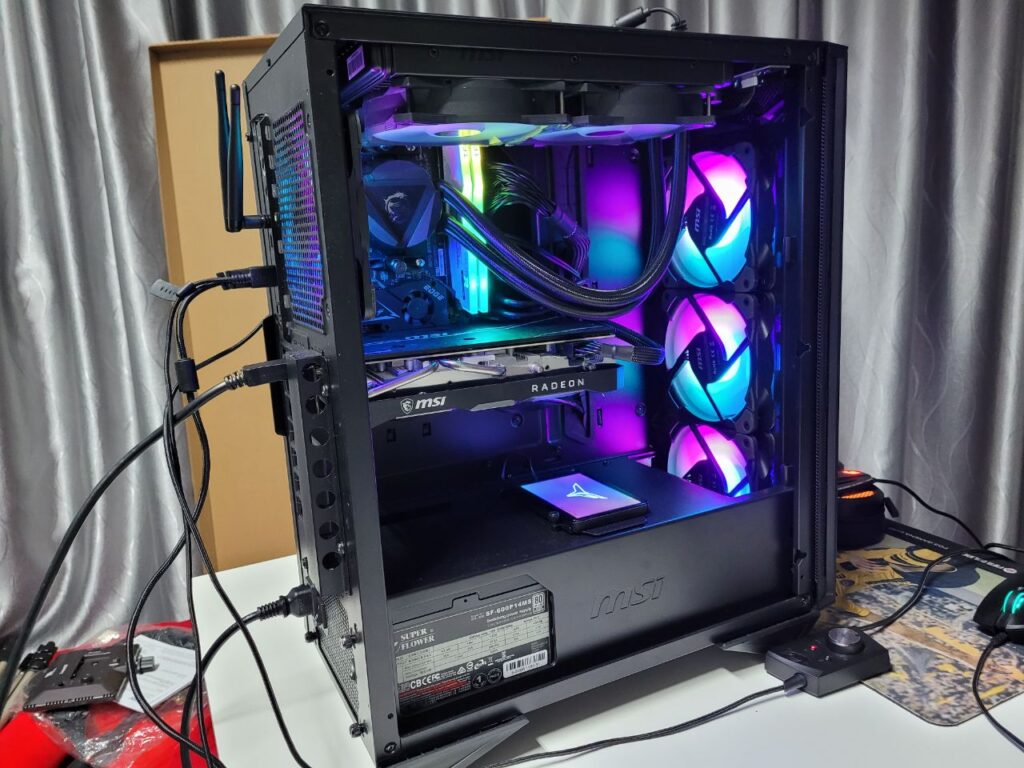
Anyone that uses Adobe Premiere Pro will readily attest that, while the program is one of the best on the market, it can be a pain on both the processor and GPU. The program is notorious for sending fans into overdrive as it processes the many frames and effects you utilise to get the perfect video.
In our tests, we used 4K UHD video with multiple tracks for both audio and video as well as multiple overlays. Scrubbing the timeline with the preview set to full resolution was pretty smooth with little lag. Rendering complex effects and overlays in the footage for preview and export didn’t take too much time too. The 10-minute clip took about 25 minutes to render in full.
High Load Processing
To test this one out, we use a complex excel sheet – something a person dealing with large amounts of data would be using on a daily basis. The excel sheet was pretty huge – coming in at about 1GB with tables and charts that contained large, complex formulae. We manipulated the values in the sheet to test how long it would take the system to run the computation.
We were pretty impressed. The updates were done near instantaneously in tables while charts took slightly longer to update. This was one of the tests that actually impressed us when we performed it.
Final Verdict
AMD’s future proofing of their motherboard chipsets weighed pretty heavily in the consideration of whether the build is worth the time. The fact that they’ve promised support until 2020 for their current 400 and 500 series motherboards allows end users to bump up the power when they need it.
That said, you’d expect that system running “outdated” or older hardware had a lot lacking in terms of performance. However, as Dr Lisa Su mentions over and over again, it looks like, unless you’re in dire need of a top of the line system, AMD’s Ryzen and Radeon hardware does stand the test of time or in her words, “..ages like fine wine”. Performance in gaming, video editing and even high load processing was consistent and while it may be slower than newer ones, it didn’t have much to make up.
All in all, the build is a very capable one with at least another two to three years left in the higher levels of performance. Best part, you can create a similar one for about the same budget or you could go cheaper too.



